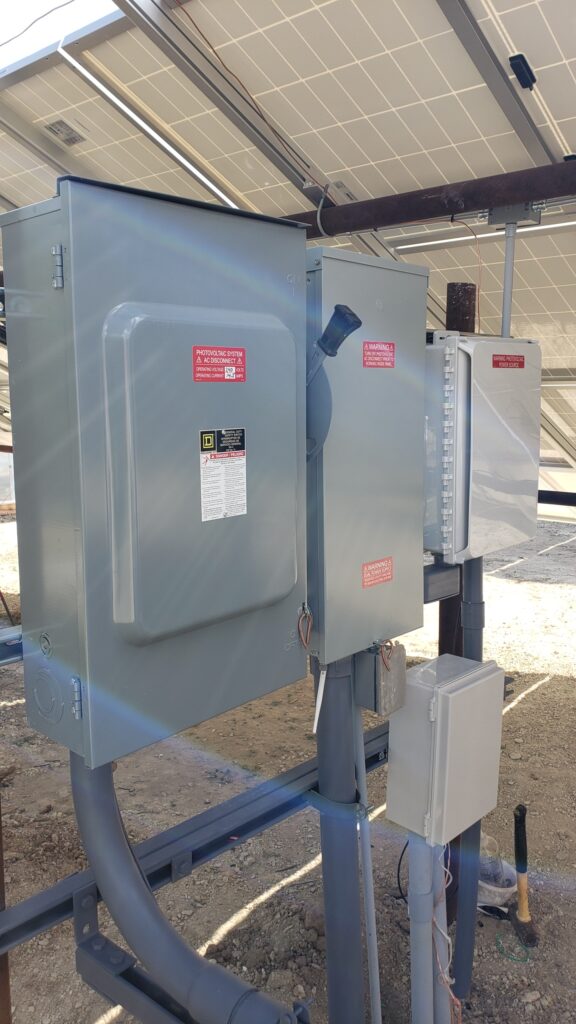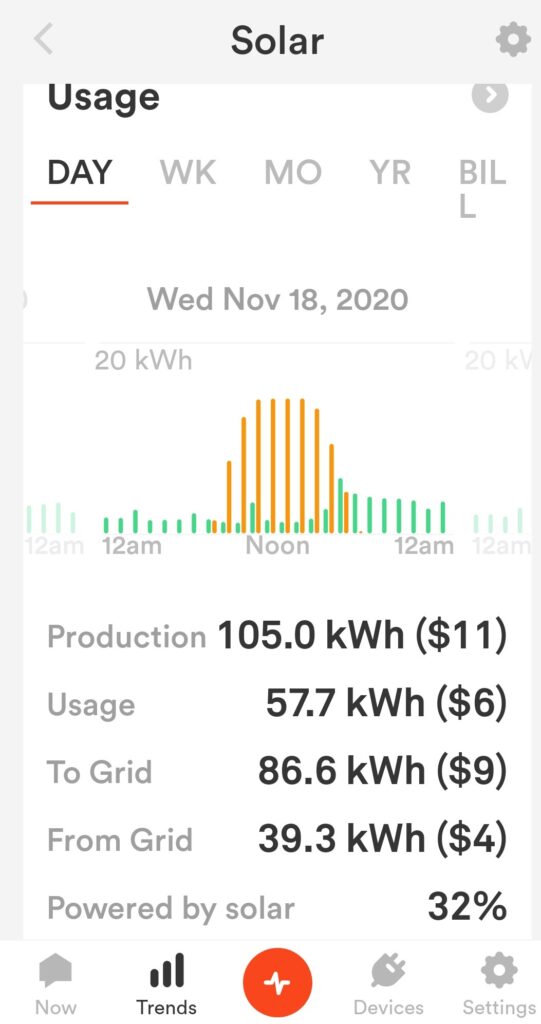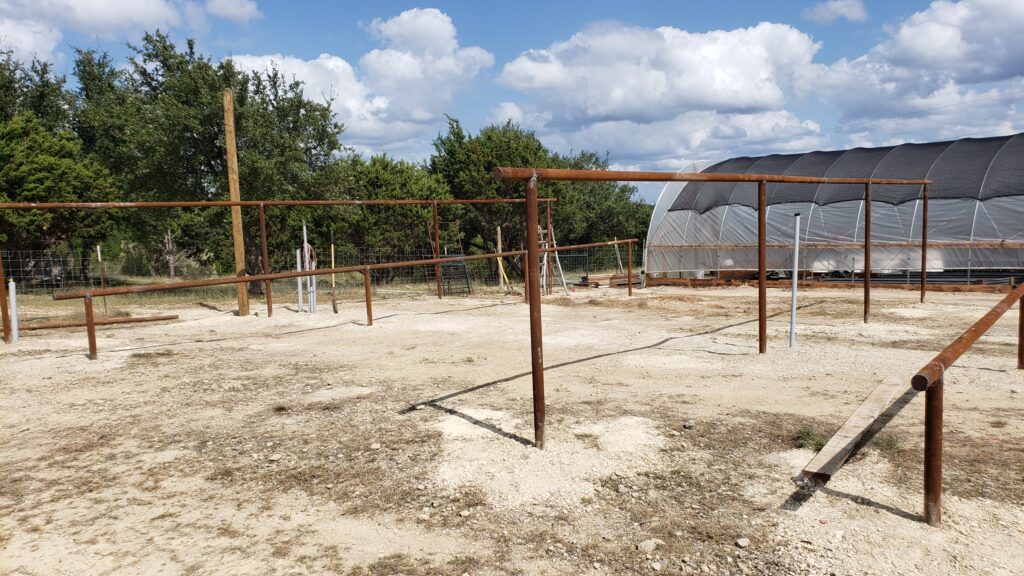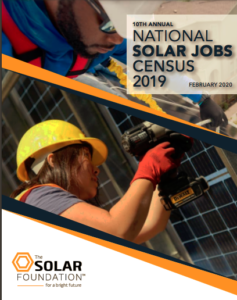Jan 21, 2021 | News
The Texas Solar Energy Society (TXSES) announced the election of six new members to its board of directors, as well as the full slate of officers.
Joining TXSES’s board of directors are Howard ‘Scot’ Arey, owner of Solar CenTex; Dr. Ariane L. Beck, Research Fellow at the LBJ School of Public Affairs at The University of Texas at Austin; Ann Hamilton, former senior grant officer at Houston Endowment Inc. (HEI); Mary C. Palmer, Environmental Program Coordinator, Austin Energy; Dub Taylor, Director Texas State Energy Conservation Office (retired); and Ron Zagarri, Director-at-Large North Texas Renewable Energy Group, former vice-chair of the TXSES Board.
“We are honored to welcome this impressive group of individuals to our board,” said TXSES Executive Director Patrice ‘Pete’ Parsons. “They bring enormous talent, insight and dedication to clean energy and are committed to helping TXSES carry out our mission as an independent, national not-for-profit organization accelerating the clean energy transformation through quality educational materials that will grow the industry, protect clean air, build healthy, resilient communities, support local, well-paying jobs and lay the foundation for energy independence.”
Howard “Scot” Arey | Chair
Scot is the owner of Solar CenTex, a solar installer from Harker Heights operating since 2013. Scot was a former TXSES board member and chairperson and after a multi-year hiatus, wants to return to the board during a critical period for Texas distributed generation.
Dr. Ariane L. Beck
Ariane is a Research Fellow at the LBJ School of Public Affairs at The University of Texas at Austin. Her research focuses on how interactions between underlying social, behavioral, economic, and technological components of the energy system impact diffusion of clean energy technologies and how information channels can accelerate diffusion processes. Previously, she was project manager for a consumer side smart grid research project and served as Assistant Department Chair for the Electrical and Computer Engineering Department at UT-Austin. She has managed over $25million in DOE projects throughout her career and has over 40 peer-reviewed publications. Her recent projects include producing a roadmap for scaling community solar in Texas and developing a better understanding of the role of community-based organizations and knowledge spillovers in the solar ecosystem. Dr. Beck received her Ph.D., MS, and BS in Electrical Engineering from The University of Texas at Austin.
Ann Hamilton
Ann served as senior grant officer at Houston Endowment Inc. (HEI), Texas’s largest private philanthropy, whose portfolio includes solar and energy efficiency, for 18 years. During her tenure, she developed its environmental grant-making portfolio, became familiar with environmental groups statewide, researched and visited potential grantees, and recommended over 1,000 grants for board approval, totaling over $220M. She co-founded and presided over Texas Environmental Grantmakers Association for 12 years and Cullinan Park Conservancy for 10 years. Hamilton has been recognized for her efforts by the Texas Land Trust Council, Lady Bird Johnson Center, Hermann Park Conservancy, and other groups. She received the Terry Hershey Woman in Conservation Award from the Texas Audubon Society in 2016. Hamilton currently serves on the Board of Directors for The Aransas Project, The Progressive Forum-Houston, and Bayou City Initiative. She is an emeritus director of the International Crane Foundation and The Philosophical Society of Texas.
Mary Palmer
Endorsed for her specific brand of organization, compassion and focus, Mary is a leader within the Customer Renewable Solutions team at Austin Energy. As an Environmental Program Coordinator, Mary works to accelerate the transition to a carbon-free energy future by engaging with commercial and residential customers and the solar contractor community. In her work, she implements program design and strategic planning to grow the City of Austin’s renewable energy programs. Mary is skilled at combining business acumen with a human-centered design approach. She is passionate about being a catalyst for continuous improvement and brings unique perspectives gained from seven years of experience in the non-profit sector. Her proudest achievement is working with local communities and volunteers from all over the world to install rainwater harvesting systems; a total capacity of 82,900 liters of potable, accessible water to residents of Fiji.
Dub Taylor
For more than 25 years, Taylor has helped advance cost-effective, clean energy technology and policy through his work in the public sector. For twenty years, he was Director of the Texas State Energy Conservation Office (SECO). Prior to SECO, he was with the Texas Railroad Commission’s Alternative Fuels Research and Education Division. At the federal level, Taylor served on and twice chaired the U.S. Department of Energy’s State Energy Advisory Board (STEAB). Originally appointed Chair by President George W. Bush’s Energy Secretary Samuel Bodman, he was again appointed to this role by former Energy Secretary and Texas Governor Rick Perry. Taylor currently serves on the Boards of PACENation, the National Association of State Energy Officials Institute, Conservative Texans for Energy Innovation and the Austin ISD Environmental Stewardship Advisory Committee. He is a member of the Austin-San Antonio Chapter of the Association of Energy Engineers and the Texas Chapter of the Energy Services Coalition.
Ron Zagarri | Treasurer
In 1918, labor leader Nicholas Klein observed, “First they ignore you, then they laugh at you, then they fight you, then you win.” The same can be said of energy disruption, considering that America can arguably attain 100% sustainable energy in this decade. As a fossil fuel leader, this transformation places Texas squarely in the fighting stage on the path to decarbonization. Although we can expect a bumpy ride, Ron believes TXSES is uniquely positioned to accelerate this great transition. Former vice-chair of the TXSES Board, Ron has been assisting the organization with the conversion of its accounting practices.
With the election of Arey, Beck, Hamilton, Palmer, Taylor and Zagarri, TXSES’s board includes Amy Olsen, Wells Solar, Vice-Chair; Joshua Rhodes, Ph.D. Webber Energy Group, the University of Texas at Austin and IdeaSmiths LLC, Secretary; and David Brearley. According to TXSES by-laws, each TXSES chapter has a seat on the TXSES board. The five TXSES chapter representatives are: Rosa Orenstein, J.D., North Texas Renewable Energy Group; Dylan Rup, Houston Renewable Energy Group; Leslie Libby, Solar Austin; Kaylyn Randolph, Build San Antonio Green; and Shelby Ruff, Eco El Paso.
Jan 11, 2021 | News
Dec 16, 2020 | News
 Chair’s Corner – December 2020
Chair’s Corner – December 2020
Katherine Searcy, Chair
As we wrap up one of the most tumultuous years that I can recall, I return to gratitude as a centering and productive force: gratitude for the technical and business achievements that enabled climate-friendly photovoltaics to become a dominant source for new electric generating capacity nationwide; gratitude to live in Texas, a state with such an abundant solar resource that we have the second largest installed solar capacity of any state, and we are predicted to more than triple that capacity in the next five years; and gratitude to our members who have sustained our organization through this uncertain year with their generous donations.
Within the organization, I extend sincere thanks to our Executive Director, Pete Parsons, who has faced down an extremely challenging first year with enthusiasm, humor, and determination. I’m grateful for the other Executive Committee members, Micah Jasuta (Vice Chair) and Paul Gonin (Treasurer), who have met weekly to provide counsel and steer the organization, and for the full TXSES Board.
I give thanks to Lucy Stolzenburg, our previous Executive Director, for supporting this year’s Cool House Tour. I sincerely thank Ron Zagarri for overseeing the transition to a new accounting system and new bookkeepers, a detailed and sometimes tedious, but critical, task for a lean nonprofit such as ours. Finally, I want to extend a special thanks to Jane Pulaski, who has donated untold hours managing our communications, social media accounts, and grant applications throughout the year.
In 2020, we transitioned the Cool House Tour to a virtual format and were excited to learn that half of the participants were first-time attendees. We continued to publish this Solar Reflector newsletter, and we substantially increased our social media presence. We welcomed Eco El Paso as our West Texas chapter. Finally, we began expanding services to our business members by forming a policy committee.
Through this committee, we support solar-friendly policy in Texas by connecting our business members, collaborating with other nonprofits, and providing credible information to relevant stakeholders (industry, utilities, legislators, and the general public).
Looking forward into 2021, we intend to expand our programs. The Cool House Tour will continue in a virtual format. We will establish the policy committee as a valuable forum for our business members to exchange information and form coalitions for mutual benefit. Taking inspiration from our chapter, Solar Austin, we are seeking funding to create equitable, clean energy internship programs in each of our chapters’ cities.
Finally, as funding allows, we intend to promote community solar as a viable option for people who cannot install solar on their own roofs, yet want to power their lives with the sun.
Weathering this year’s storm truly took a village. I’m grateful for everyone’s contributions that enabled us to continue working toward our mission of equitable access to solar energy for every Texan.
Happy Holidays and Best Wishes for a Healthy New Year,
Dec 15, 2020 | News
When Michael Blank was nine, his dad, an electrical engineer, taught him basic wiring. At 13, Blank was doing more complicated electrical tasks than dad was comfortable supervising. Spoiler alert: solar PV and Michael Blank have a future together.
When IBM released its first personal computer in 1986, Blank and fellow students at Video Technical Institute at Long Beach disassembled it and put it back together. Thus began his career in network engineering. So it’s no surprise that when he turned to home renovations, going green and going solar were a given.
We caught up with Michael recently to learn more about his sustainable home in Dripping Springs, including a 20kW ground mount solar PV system with battery backup. Here’s our conversation.
TXSES: Given your early DIY tendencies toward things electrical and mechanical, it’s little wonder that solar PV and you were destined to meet. When did it end up on your to-do list?
MB: Solar and green renovations were always a hobby. In 2009, I installed our first PV system, a 6kW system with Xantrex inverter on our custom home in Fort Worth. It was an expensive system; those $900 Kyocera panels cost $40K. We saw some savings, but it wasn’t until we moved to our current home in Dripping Springs that we really got to go big with PV.
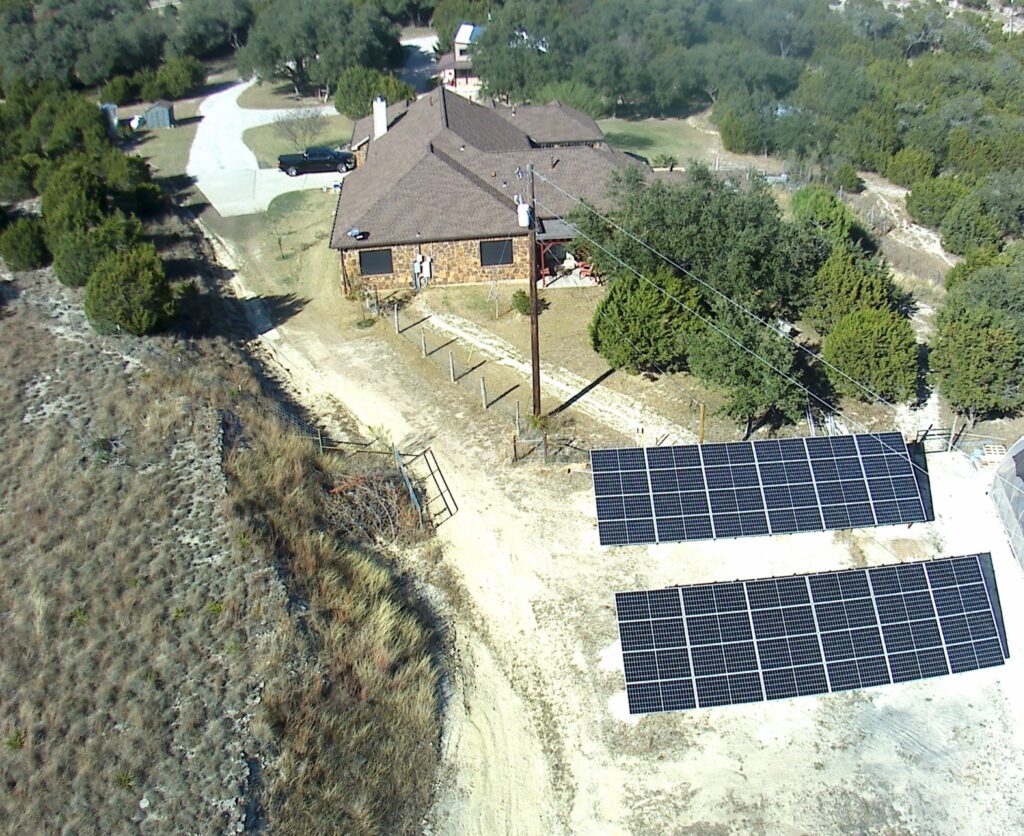
TXSES: Tell us more.
MB: When we moved from Fort Worth to Dripping Springs in 2017, we decided to take our $40,000, 6kW PV system with us. I installed it on the roof of my office/shop.
TXSES: And is it still generating sufficient power?
MB: Surprisingly yes! Despite its age, that system is still producing like a workhorse. I was expecting 10%-20% loss but it hit its full 6K power, zeroing out my bill for the shop!
The next project, our home in Dripping Springs, is 3,500sf with a pool and two AC units. Pre-PV, our bills were running $150-$200 in winter and $450 in summer.
TXSES: And now with your new, larger PV system?
MB: We started designing a 20-25kW rooftop system with battery backup. I contacted four Austin installers whose prices ranged from $50-70K for just the PV; batteries added another $15-20K. And yes, there is a 26% federal tax credit but the more I thought about it, the more I decided that I would do it myself but not as a rooftop installation. We’ve got six acres of land –just perfect for a 26-degree ground-mount PV system.
TXSES: So all you needed was a welder and some pipe.
MB: That and the system. I met with a local welder and found technical specs for a racking system from Iron Ridge. Panels and system came from altE Energy Store in Massachussets. The ground mount system, which we call Phase 1, was commissioned November 20th. It went up quick! I call it Texas meets Technology.
TXSES: Catchy!
MB: We repurposed old 3” drill pipe from Odessa. Once the mounts are built, you can install one rack in a day. Grid connection to Pedernales Electric Coop (PEC) was very easy. They came out a week after I applied for certification and passed it.

Our new system is a 20kW ground mount Q Cells 420W panels (Q peak duo L-G8.2) with 14.4 kW usable from the microinverters, Enphase IQ7+. 7kW is grid-tied directly and the other 7kW connects to an Outback Radian GS8048 grid-tied inverter with two 6kW KiloVault HAB 7. I’ll build a small protected shed that will be insulated and temperature controlled for the batteries and inverter in Phase 2.
Although the panels are 420W, the inverters only produce only 300W each, but given the size of the system, we’re still gathering more light and collecting more energy quicker because of the size of the panels.
TXSES: What’s the system producing now? Was it less expensive than $70K+?

MB: It’s producing 105kW/day on a good day which will zero out our winter bills. Our $450 electric bill should be $100. And yes, much less expensive than $70K. The PV system with racking was about $26K; battery system $12K; steel for ground mount $2K, totaling about $40K. I was originally pushing for 25kW system to completely zero out my electric bill but all of the solar installers I spoke with recommend sizing a system to 80%. My November/December solar production was 2,164kWh and actual usage for the home was 1,924kWh, a net of 240kWh. I’ll know at the end of the year how we’re actually doing.
TXSES: Are you net metering?
MB: Yes. We’re on the standard fixed residential rate of $08.9c/kW. Any excess power that we generate goes back to PEC’s grid. Whatever I consume at night comes back as a 1:1 credit. As long as I use it before the end of the billing period, it’s a 1:1 credit. If any excess rolls over to the next month, they cut that credit in half.
TXSES: You must be pleased. How did you decide on the battery system?
MB: The panels were the easy part of the project. The batteries were more challenging.

TXSES: How so?
MB: It really came down to what system I wanted. I looked at Tesla and LG Chem; each had its own set of issues. We ultimately went with KiloVault HAB 7.5. Because it will be a battery-backed home, 7kW of the PV array will feed into the inverter to keep the batteries charged. If the grid goes down, the Outback inverter will generate the correct frequency to turn the microinverters on, making us a microgrid and completely islanded.
TXSES: What surprised you the most about this project?
MB: That it comes together a lot quicker if you plan it! If you’re going to do it, do it right.
TXSES: And you’ve certainly done that, Michael. Thanks for sharing your story with us. OK if we circle back with you next summer for an update?
MB: Absolutely! Thanks for the opportunity to share our story.
Dec 15, 2020 | News
by Jane Pulaski
In this nothing-is-normal simmering cauldron we’re currently living in, I am nonetheless thinking about the upcoming Texas legislative session. Perhaps it’s a distraction from relentless pandemic obsessing, but as a former house and senate committee clerk, every new session still arouses my penchant for the legislative process. While every session is unique, this one comes with a wallop: the pandemic and low oil prices have decimated state coffers.

Image: Texas State Preservation Board
According to State Comptroller Glen Hegar, general revenue for the current two-year budget is some $11.5 billion less than the $121.8 billion estimated last fall resulting in a $4.6 billion deficit when the current biennium ends August 2021. That’s painful, especially when pre-COVID, Hegar predicted almost a $3 billion surplus.
Given the state’s gloomy economic position, I reached out to Charlie Hemmeline, Executive Director Texas Solar Power Association, for his thoughts about how solar might fare during the 87th Regular Session starting in a month.
“Texas has an enviable market structure for solar,” he said. “We’ve got lots of land, sun, population, and we consume the most energy.”
He’s right.
Texas is the largest energy-producing AND energy consuming state in the nation. Our industrial sector, including refineries and petrochemical plants, accounts for half of the energy consumed in the state. Despite our inherent tendency to brag, somehow that statistic doesn’t feel brag-worthy.
Before COVID, Texas’s solar outlook was embarrassingly brilliant. “We were projecting 2020 would be the biggest solar year ever, and it has been,” said Hemmeline. “We’ve more than doubled total installed capacity this year, more than doubled our footprint in utility and distributed scale installations. We’re adding gigawatts; that’s the metric now.”
Even though solar was considered an essential business because of grid reliability and security, the pandemic definitely impacted the industry. “Like other industries, solar had to figure out how to conduct business; what could companies do to keep employees and consumers safe. But the industry was able to modify its business model. Sales and business activities shifted to online platforms. Construction, whether on a roof or a large construction site, was outdoors and distanced. Frankly, solar was more fortunate than most industries.”
 The Solar Foundation’s National Solar Jobs Census details the size and scope of the U.S. solar workforce. The 2019 numbers were breathtaking: nearly a quarter-million made up the solar workforce. Over the past decade, U.S. solar jobs increased 167% adding almost 200,000 jobs. Between 2014 and 2019, solar employment increased 44%, five times faster than job growth in the overall U.S. economy. In 2019, Texas’s solar full and part-time workforce was more than 14,000 putting us in the top five.
The Solar Foundation’s National Solar Jobs Census details the size and scope of the U.S. solar workforce. The 2019 numbers were breathtaking: nearly a quarter-million made up the solar workforce. Over the past decade, U.S. solar jobs increased 167% adding almost 200,000 jobs. Between 2014 and 2019, solar employment increased 44%, five times faster than job growth in the overall U.S. economy. In 2019, Texas’s solar full and part-time workforce was more than 14,000 putting us in the top five.
Still, the Texas solar industry has felt the effects of the pandemic.
In Texas, nearly 23,000 clean energy jobs have been lost, about 9.2% of the clean energy workforce.
As bad as the losses of clean energy jobs in Texas, its oil and gas workforce has felt the effects of COVID even more. While the industry was in contraction mode before the pandemic and some jobs were added back in September, 70,000 oil and gas jobs have been lost in Texas since late 2018.
Chevron Corp. is planning a 10% to 15% reduction in its global workforce this year, the biggest recent cut to headcount yet among global oil majors. It comes after oil-services giants Halliburton Co. and Schlumberger Ltd. have already made steep jobs cuts, including in Texas.
That said, former fossil-fuel employees with transferable skills like project managers, engineers, construction specialists, are increasingly finding work in clean energy. Project managers, engineers and construction specialists are specific examples of transferable skills.
Despite the historic downturn, wind and solar production are still on a steep trajectory for explosive growth in Texas. The Electric Reliability Council of Texas (ERCOT) predicts a 150% increase in utility-scale solar to 570MW this year. Next year, it’s predicted to grow 130% to 14,00MW. On the wind side, Texas ranked #1 nationally in 2019 for installed wind capacity with 30+GW on the ground and another 5GW capacity under construction.

Photo by Sean O’Kane / The Verge
We’re carving out a leading position in large scale battery storage. Tesla’s Electric Cybertruck and Model Y SUV plant is moving to Del Valle, making it the company’s largest auto assembly plant. Musk himself is moving to the Lone Star State. Greentown Labs, North America’s largest climate-tech incubator, will open its second location in Houston in Spring 2021. By the end of last year, private companies had invested more than $53 billion dollars in solar and wind energy, producing enough clean electricity to power over 7.7 million homes.
Given these enviable facts, is there reason for optimism or concern for solar in the upcoming legislative session?
“Word from leadership is because there will be less bandwidth to deal with the flood of legislation because of the pandemic, there will be fewer bills filed,” said Hemmeline. “Legislation on the most important issues, like ways to recoup billions in tax shortfalls, will eat up a lot of oxygen. For solar, the tenor of the conversations won’t be drastically different than last session: solar is growing tremendously, it has statewide benefits and enjoys broad support. It’s in a good place to keep growing.”
The benefits of solar are truly statewide. “Not everyone can live on the Texas coast and reap the benefits of the wind resource, but everybody gets solar, either on their roof or from big box retail roofs or land tracts. It’s the best neighbor: it’s silent, doesn’t need oceans of water, doesn’t generate traffic. It’s the reason we love solar: it’s unabashedly good.”
Recently, TXSES formed a policy committee to address immediate solar issues. “This group brings a broad range of perspectives from utility-scale renewables to distributed generation to energy efficiency and new smart grid technology,” said Patrice ‘Pete’ Parsons, TXSES Executive Director. “We’re prepared to keep up with what happens with solar this session.”
Session runs from January 12-May 31, 2021. Stay tuned for updates.
Jane Pulaski, former communications specialist for the Interstate Renewable Energy Council and former TXSES board member, is currently helping TXSES amplify its message and increase its visibility via traditional and digital media.
Dec 10, 2020 | News
By David Bearley
Solar Austin, Secretary, Board of Directors
NABCEP Certified PV Installation Professional (#091804-5)
Solar Austin has had its one of its most successful and productive years since its founding in 2002. In spite of the global pandemic, we set records in 2020 for fundraising and monthly happy hour attendance. After years of operating as an all-volunteer board, we hired a three-quarter time staffer. Most importantly, we successfully executed a City of Austin-grant funded equitable clean energy jobs internship pilot program and converted it into a permanent year-round program.
In 2019, Vote Solar and the Solar Energy Industries Association (SEIA) initiated a diversity challenge to the solar industry. Surveys indicate that the solar workforce does not adequately reflect the country’s diverse backgrounds and experiences. As is the case in other industries and construction trades, women and people of color are underrepresented at solar companies and in clean energy careers.
This lack of access, representation, and diversity is not only a problem for underrepresented communities, but also for organizations. Years of studies have proven that workforce diversity and cultural inclusivity create stronger, more innovative, and more resilient organizations. Gender and racial diversity are clearly correlated with profitability, improving a company’s market performance, and overall bottom-line.
To address this problem, Solar Austin developed an Equitable Clean Energy Jobs internship matching program that benefits both employers and employees. Leveraging a $25k grant from the City of Austin, Solar Austin hired a program manager to recruit program participants, which include local clean energy companies as well as students of color and women students, and oversee program operations. In spite of the fact that the summer internships took place during a global pandemic, the Equitable Clean Energy Job pilot program exceeded our goals and key performance indicators.
The internship program benefits students by placing them in paid internships that provide valuable experience in a growing field. The program benefits employers by matching well-qualified students to specific job descriptions. Solar Austin’s strategic partners and consultants not only provide resume writing and job interview training to students but also provide diversity and inclusion training to host companies. It is a win-win for all parties.
Based on the success of our pilot program, Solar Austin has expanded its efforts to cultivate a diverse and inclusive solar workforce via a permanent program that we are calling Pathways to Clean Energy Careers. Solar Austin placed fall interns in October and will place another round of interns in the spring semester. To enhance the value to students, the permanent program provides interns with professional mentors.
As interest in the Pathways program grows, Solar Austin’s biggest challenge is finding host companies, as we consistently have more qualified students than open internship opportunities. We believe that this is a bottleneck we can solve, in part because it is not uncommon for a company to remain engaged in the program after hosting its first intern.
When Solar Austin launched its pilot internship program, its board of directors did not necessarily have a long-term plan in place to fund a permanent program management position. In practice, the timely and successful program benefitting students of color and women students has provided Solar Austin with a compelling story to tell during fundraising and grant writing endeavors. Thanks to the generous response of small donors, business sponsors, and grantmaking foundations, Solar Austin finds itself at the close of 2020 in a strong financial position to continue improving and expanding its innovative and equitable Pathways to Clean Energy Careers program.

 Chair’s Corner – December 2020
Chair’s Corner – December 2020
